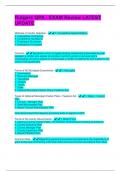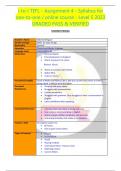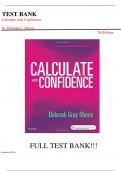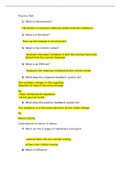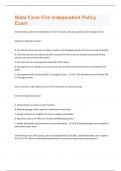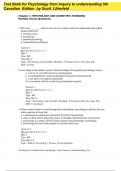Tentamen (uitwerkingen)
Solutions for Spreadsheet Modeling and Decision Analysis, 9th Edition Ragsdale (All Chapters included)
- Vak
- Instelling
Complete Solutions Manual for Spreadsheet Modeling and Decision Analysis: A Practical Introduction to Business Analytics, 9th Edition by Cliff T. Ragsdale ; ISBN13: 9780357132098. (Full Chapters included Chapter 1 to 15). Excel solutions included... 1. Introduction to Modeling and Decision Analysi...
[Meer zien]





